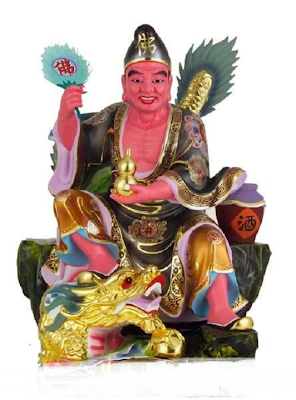The 5th lunar day of Chinese New Year is the welcome day for the god of wealth. Many families worship the god of wealth in the early morning.
Some even invite the lion dance team to celebrate the opening ceremony of a store. The lion is the mascot of the god of wealth.
The house or store owner will give the mascot a red packet with money reward inside.
Who is the god of wealth? The answer is that there is more than one god of wealth in the Chinese culture, in fact five. There are two gods of sword wealth and two gods of pen wealth.
The fifth is the god of windfall, because lucky money make it easy for people to get rich faster. He is the one referred to when Chinese refer to the god of wealth as one.
The five gods of wealth arose and were intertwined with Chinese history. They were personalities involved in history of dynasties.
The five gods or deities of wealth are sometimes referred to as god of wealth for military wealth (武財), god of wealth for scholarly wealth (文財), god of wealth for directly-associated wealth (正財), god of wealth for physically-associated wealth (偏財), god of wealth for sudden wealth or wind fall (橫財). Each type of Wealth is being in-charge of by one deity or god of wealth.
In Taiwan, Ji Gong the Living Buddha is regarded also as god of wealth and this is also the popular belief in South East Asia. He too likes to frolic with lion dancing during festivities in temples.
 |
| Ji Gong the Living Buddha |
Feng shui practitioners are fond of using the statue of Laughing Buddha (Maitreya) as a fortune god to bring fortune to home or business.



